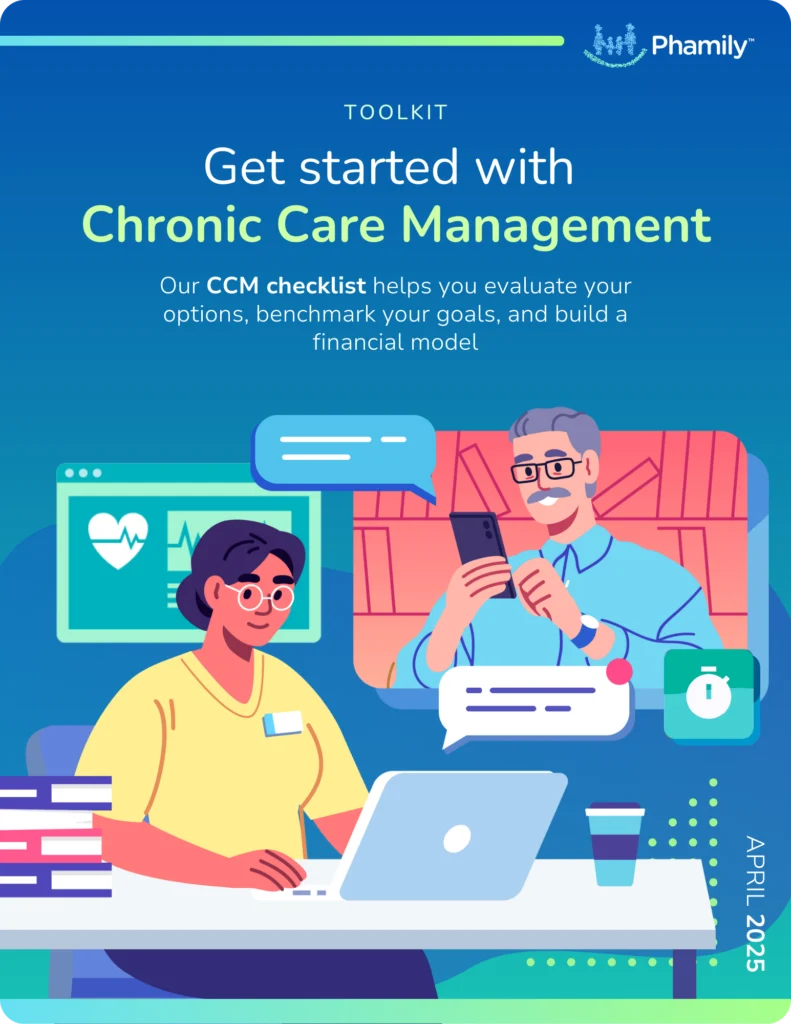Take care of all your patients, easily and profitably.


Phamily is the #1 In-House Chronic Care Management & Proactive Care Platform.
Phamily helps health systems and medical groups across the country launch scalable in-house Chronic Care Management and Advanced Primary Care Management service lines to proactively support their patients between visits, while generating sustainable monthly reimbursement.
3 million messages
personalized and sent to patients
5.1 million minutes
of reimbursable care work logged
20+ specialties
supported in 33 states
Check out our new and improved CCM toolkit. We'll help you evaluate your options, benchmark your goals, and build a financial model.

HOW IT WORKS
Phamily powers 3 critical transformations
We bring together everything that’s required to create higher quality care, a better patient experience, and greater financial & operational sustainability.

Higher Quality Care
Average of 6.5 care gaps closed per patient
Greater Sustainability
$45K in revenue for every 1,000 patients enrolled

Better Patient Experience
77.4 Net Promoter Score
OUR RESULTS
Delivering Superior Preventative Care
Phamily has delivered results at quality and growth focused health networks and medical groups around the country.

80% engagement rate
keeps patients connected with their provider

5% decrease in hospitalizations & ER visits
promotes quality-of-life and reduces costs

6.5 care gaps closed per patient in a year
delivers better outcomes in categories such as symptoms, medication and lifestyle
A PROGRAM THAT SCALES
Maximize Your Organizational Sustainability
Not only do patients love Phamily, but so will your organization. We increase revenue per month, net profit every year, and can care for 500 patients through a single full-time clinical worker.

$45k
revenue per month for every 1,000 patients enrolled
$213k
net profit per year for every 1,000 patients enrolled

Care for 500 patients
managed by a single full-time clinical worker
CONNECTING WITH PROVIDERS
An Experience Patients Love
A Net Promoter Score (NPS) measures customer satisfaction and how likely people are to recommend a service to a friend or colleague.
Phamily’s NPS of 77.4 is significantly higher than the average score of 38 for healthcare industry brands.
Our NPS is higher than brands such as CVS (60) and the Mayo Clinic (41), and even beats out the providers of beloved products and services such as Apple (61) and Amazon (47).
want to learn more?
get a demo
Are you a patient? Click here to learn about Phamily for patients.
Consistent care, fewer calls
Replace hundreds of monthly phone calls with weekly personalized text check-ins that patients love.
Work smarter, not harder
Headache-free auto-documenting care management, smart care plan templates and follow-up protocols.
Connected Care at significant scale
Enroll 1,000+ patients in 60 days. Not a dead-end side project that goes nowhere fast.
